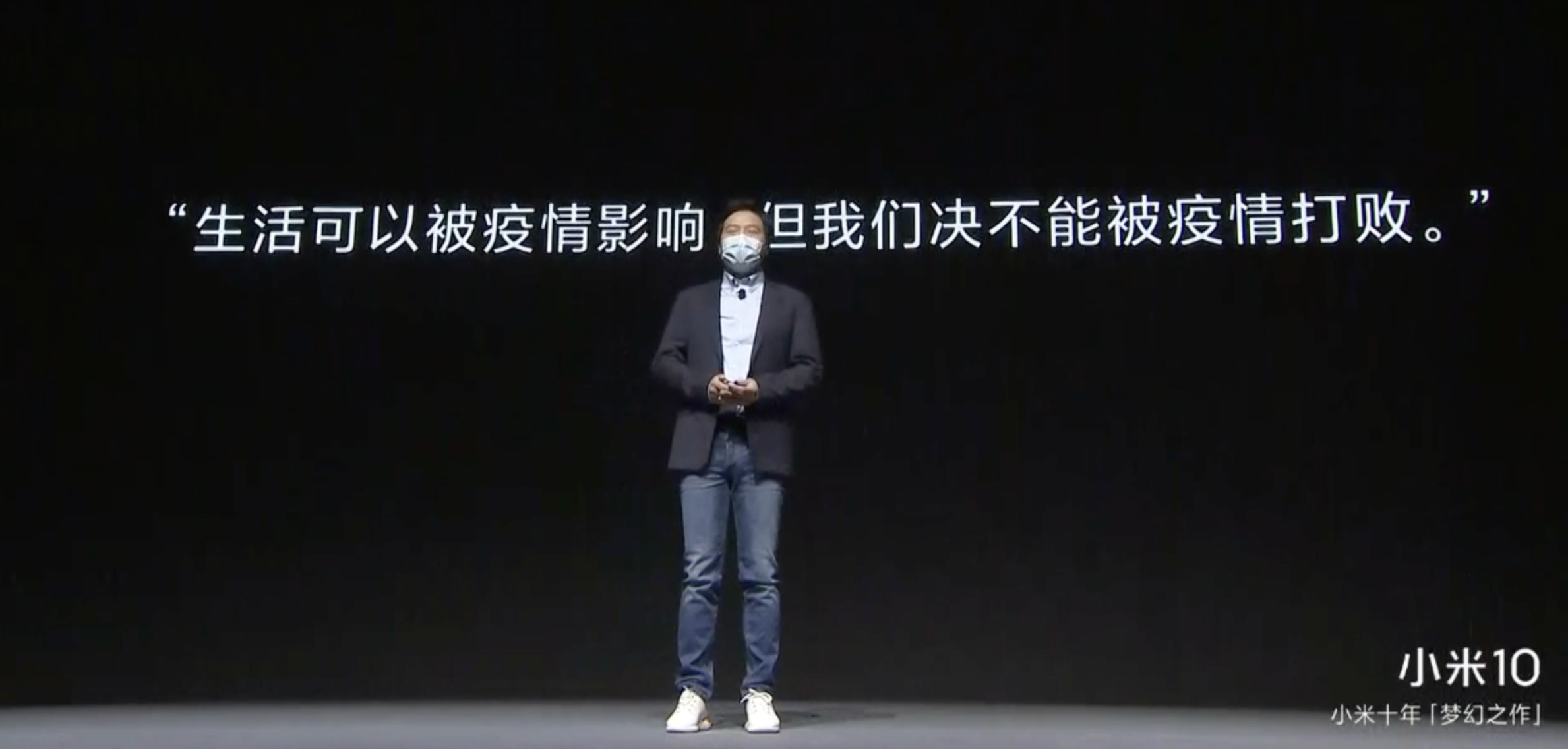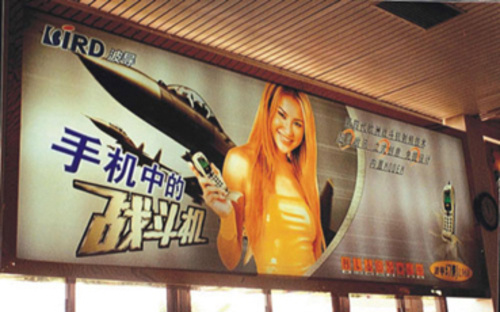The lessons that 2003 left for today’s mobile phone industry.
Effects of the new coronavirus pneumonia epidemic on work and life are obvious to everyone. In order to control the spread of the epidemic and avoid crowds, people have reduced the frequency of travel, the frequency and opening hours of public transportation and public places have also been significantly reduced, and most companies have also delayed construction.
As part of China’s business environment, the mobile phone market is unavoidable. Whether the offline stores of Apple, Xiaomi and other manufacturers announced suspension of business, or the loss of production capacity of the factories in the supply chain, or the planned launch of new products all turned into live broadcasts, real changes have taken place in the Chinese mobile phone industry .

It ’s not just the Chinese mobile phone market that ’s affected. Research firm Strategy Analytics recently released a forecast that China ’s mobile phone shipments will decline by more than 30% in the first quarter. The global mobile phone market, which is closely related to China’s industrial chain, will also decrease by 2%.
In this outbreak, many companies that have experienced SARS have made more positive moves in order to survive smoothly. During the SARS epidemic in 2003, the mobile phone industry was no exception and suffered the same as other industries. Therefore, we need to review the past to see which views and actions have value today.
Mobile phone sales declined during SARS, but communication time increased
The outbreak of the SARS epidemic in China was mainly concentrated in the first half of 2003, exactly from February to June, which is the first two quarters. This time period has always been when the mobile phone and the entire communications industry released new products and set the goals and strategies for the whole year, but suffered ruthless interference from the epidemic.
At that time, mobile phone sales were still very dependent on offline channels. Measures such as reducing the flow of people after the epidemic occurred and closing stores will inevitably lead to a significant decline in sales performance. JPMorgan Chase analyst Xia Baowen surveyed mobile phone dealers in Beijing and Shanghai and said that sales during the epidemic fell by about 40% compared to usual.
Until the SARS epidemic eased significantly in late May, and people were able to travel more freely, and the computer city and mobile phone stores opened one after another, the mobile phone market began to recover. The decline in sales of the mobile phone industry during the SARS period has also led to the failure of domestic manufacturers’ customary commissions and one-to-one sales models to be “failed” due to cost constraints. International brands have rebounded in a short time.
Fortunately, the decline in sales performance in the first half of the year did not affect the whole year. According to data released by Analysys International, in 2003, about 73.78 million mobile phones were sold in China, compared with 6816 in the previous year. The performance of Wanbu has an improvement of 8.24%. After experiencing SARS, the Chinese mobile phone market finally survived.
Subject to the objective conditions that various mobile communication services need to go to the physical business hall, the growth rate of subscribers of the three major operators has been reduced due to reduced trips. According to the Beijing Entertainment News, Chinese mobile phone users increased by 5.7 million monthly in the first four months of 2002, and decreased to 5.02 million monthly during the SARS period. In April 2003, there were only 4.23 million.
But it is also on the premise that people’s travel has greatly reduced, and communication needs across the country have been stimulated, and the frequency of users’ phone calls and text messages has increased significantly. In April of that year, China Unicom experienced a 40% increase in user talk time from last month. According to the statistics of the Ministry of Industry and Information Technology, a total of 62.68 million new mobile communication users were added throughout the year, in line with expectations of the previous year.
Since most of the factories are not in the high-incidence area of the year, the impact of China’s mobile phone manufacturing is not obvious. In the first half of 2003, 74.13 million mobile phones were produced in line with industry expectations. Moreover, the industry remains optimistic. PCB board supplier Zhanhua once stated that the original 80 million global target was difficult to achieve, but the domestic market still has nearly 60 million demand, which can be the same as the previous year and continue to expand production capacity.
International manufacturers are slightly affected, and they have basically passed through.
In 2003, 3G network just started to be put into use worldwide, but China is still far from 3G, and it is still the world of 2G mobile phones. In addition to 3G and peripheral functions, mainstream mobile phone selling points have entered the market one after another: the concept of mobile phone GPRS Internet access has begun to emerge, color screen mobile phones have begun to be popular, and CRBT and MMS have become fashionable for some time.
Even with the bright spots that made consumers of that year, both international and domestic manufacturers still cannot escape the joint impact of the SARS epidemic.
Motorola has said that due to the decline in the consumer spending of Chinese residents affected by the epidemic, sales in the second quarter of the year could not meet the expected target. As soon as the news was released on June 9, not only Motorola’s own stock price fell by 3.6%, but also stocks of companies in the communications industry in Europe and America such as Texas Instruments fell.
After a project manager was diagnosed with SARS, Motorola entered the home office from April 29 until it was lifted. Motorola’s Tianjin plant also entered shift mode, and production speed slowed down significantly. originalThe expected press conference and other activities have also been cancelled.

Nokia launched a more fierce attack on the then market overlord Motorola this year. In the international market, it launched N-Gage game phones and mobile phones with music and camera functions. It also began to introduce new CDMA models in China . However, under the premise that the environment is not optimistic, Nokia also lowered its market expectations.
Samsung, which is preparing to compete in the mobile phone market, was also affected by the SARS epidemic and failed to achieve its sales target for the second quarter of the year. In 2002, the Chinese market provided Samsung with $ 32 billion in sales, accounting for 20% of annual revenue.
But from the perspective of the whole year, all three international mobile phone manufacturers have successfully passed the SARS epidemic. Motorola’s entire company reversed a loss of 2.5 billion U.S. dollars in the past year and reaped a net profit of 893 million U.S. dollars. Nokia also returned to sales and profit growth, with a global share of 38%. Samsung mobile phones also gained a foothold in China.
In general, the multi-quarter epidemic cycle did not affect the market strategy of international mobile phone manufacturers in China too much. In addition to changing the working mode and slowing down production speed according to the epidemic situation, basically it was still in accordance with the original plan. get on. Due to the competitiveness of the product itself and the appeal of international brands, the annual market performance was in line with expectations.
Although business has suffered losses due to the epidemic, mobile phone manufacturers have each helped out and fulfilled the social responsibility that commercial companies should have. Companies such as Nokia, Motorola, Alcatel, Capitel, Siemens, Panasonic, Sony Ericsson, UTStarcom, and Bird have donated mobile phone products, cash and medical supplies to medical personnel and related departments.
Domestic manufacturers seize the potential of the epidemic
Different from the market strategy of international manufacturers focusing on brand image and mid- to high-end selling points, domestic mobile phone manufacturers started a price war at that time to grab the market from the former.
Some analysts predicted during the SARS epidemic that the sales volume reduction due to the decline in foot traffic will press the pause button for an increasingly fierce price war. However, in fact, the special environment during the SARS period made domestic manufacturers’ market strategies more active.
Compared to the international manufacturers that occupied the mid-to-high-end market at that time, the price war of domestic mobile phones seems very familiar now: color screens, MMS, Cailai, GPRS, etc. are still new and international. The selling point of the brand asking thousands of dollars, when the domestic mobile phone becomes a thousand yuan standard, in today’s words,Cost-effective.

On the other hand, domestic mobile phones have also taken advantage of price and other advantages to establish a huge channel to sink the market early. During the SARS period, first-tier cities such as Beijing, Guangzhou, and Shanghai were in serious condition, and stores also responded to requests for suspension of business. The operation of third- and fourth-tier cities has not been greatly affected, and many sales points are still operating.
In this contrast, some mobile phone brands have even achieved a continuous rise in sales, and domestic mobile phone market share has begun to exceed that of international mobile phone brands. Low-cost, multi-functional, multi-channel strategies are undoubtedly feasible. By the end of 2003, domestic mobile phones had gained more than 54% of the market.
This year, Bird hit 258 million yuan in marketing expenses and became the number one manufacturer in the market with nearly 10 million units. The relatively simple threshold and sales model of the mobile phone industry have made many price wars. After sharply lowering the price during SARS and stimulating sales through incentives such as cars, the sales volume in 2003 was 2 million more than the second-ranked Motorola.

At that time, TCL, the second largest domestic mobile phone in the year, also had a terrible sales of about 7.5 million, and later it reached a cooperation with French mobile phone brand Alcatel. Panda, Amoi, Kejian and other mobile phone manufacturers also submitted the answer sheet in line with expectations. Domestically produced mobile phones did not seem to be affected by SARS.
After this, it is a series of downhills: whether it is Bird or other manufacturers, sales have fallen sharply in the next few years and eventually disappeared in the market. International manufacturers, once regarded as their biggest rivals, live to the next era. Domestic mobile phones have survived SARS, but have not overcome their own problems.
In general, the epidemic did not have a more serious impact on the mobile phone industry. Instead, it was because of internal problems that opened the first reshuffle of the Chinese mobile phone industry. I chose to use the profit margin for sales, but the limited innovation ability could not convert sales into long-term shares. Quality problems also led to ten million-level inventory, which pushed down Domino’s first card.
The performance during the SARS period seemed brilliant, and the essence of the first batch of domestic mobile phone manufacturers to be strong and strong was directly hidden, leading to almost all out after a few years.